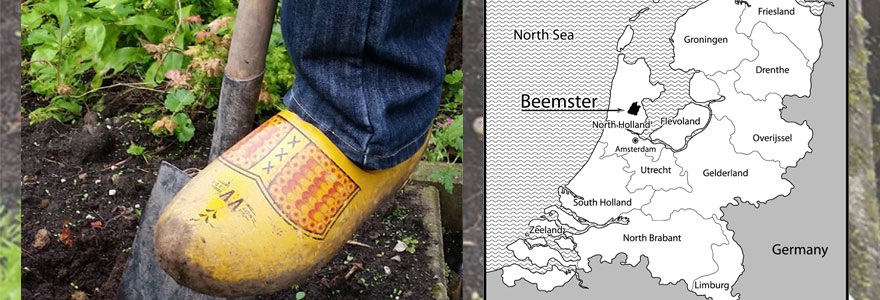News and Updates
Contact
Faculty of Social Science
Social Science Centre
Room 9438
Western University
T. 519-661-2053
F. 519-661-3868
E. social-science@uwo.ca
Walk a mile in my klompen
November 07, 2017
They are an iconic item, a distinctly Dutch shoe, but wearing wooden clogs, or ‘klompen’ may have also resulted in a distinct pattern of damage to Dutch farmers.
New research from Andrea Waters-Rist, Associate Professor in the Department of Anthropology, and her colleagues suggest that the population of a 19th-century rural farming community from the Netherlands had dramatically increased rates of bone lesions, Osteochondritis Dissecans (OD), specifically located in the feet.
In modern populations, the OD bone lesions occur primarily in athletes and generally are found in knee, elbow, ankle, hip, shoulder and/or wrist bones. They are rarely found within the foot, either in modern populations or among other archaeological examples. Waters-Rist, along with Irene Vikatou and Menno Hoogland from Leiden University examined skeletal remains from the Middenbeemster area of the Netherlands, and found that 12.9% of the people had bone chips in foot bones.
As a community centred on cattle farming, the Beemster population would have been involved in extensive outdoor activity, increasing the risk of repetitive trauma in the foot. This stress would have been exasperated by the footwear of choice, the hard, inflexible wooden clog.
Waters-Rist said that for the farmers, the clogs would have been very useful shoes, as they were affordable, kept their feet dry and if stuffed with straw, quite warm. As such, they would have been worn for most uses. As the clogs have a stiff sole, they could have amplified the stresses associated with farm work and travelling by foot.
Even in present-day Beemster, “some people, especially the older generation, still wear clogs on a semi-regular basis,” said Waters-Rist.
The remains were excavated from a cemetery-site beside a church, which was expanding. Waters-Rist was lead osteoarchaeologist on the project and said the investigation was fully support and aided by the Historisch Genoostchap Beemster, a local historic society, who helped clean the bones and provided archival research.
“These were the living descendants of the people we were examining,” said Waters-Rist and they were very interested in the information that could be obtained from the skeletal remains, which could provide a better understanding of Dutch society.
Waters-Rist said that bio-archaeology provides insight into the lives of populations that are often not captured in the historic texts.
From the paper: “Archaeology is always looking for new and better ways to reconstruct past human behaviour, and the occurrence of pathological lesions in the foot may be a valuable indicator of activity, trauma, and as will be presented, footwear, in this case the wooden clogs, ‘klompen’, commonly worn in the Netherlands in the Medieval and post-Medieval periods. The main aim of this study is the examination of a high prevalence of foot lesions in a post-Medieval population from the Beemster polder of the Netherlands, in order to illuminate aspects of past activity and behaviour.”
Waters-Rist hopes the research can also help spur additional research into the effect of footwear choices on our bodies, impacts that are still important today.
“Osteochondritis Dissecans of skeletal elements of the foot in a 19th century rural farming community from The Netherlands” was published in the International Journal of Paleopathology, Volume 19

